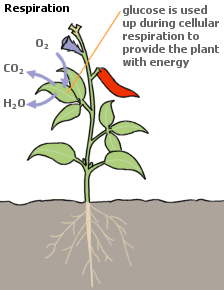Proteins and Amino Acids
Proteins are found in all cells and carry out a variety of important cellular functions. Within any one cell there may be thousands of different proteins having a variety of sizes, structures, and functions. Proteins are also important structural components of the cell wall.
Proteins are the most complex and abundant of the macro molecules. Within cells, many proteins function as enzymes in the catalysis of metabolic reactions, while others serve as transport molecules, storage proteins, electron carriers, and structural components of the cell.
They are especially important in seeds, where they make up as much as 40 percent of the seed’s weight and serve to store amino acids for the developing embryo.
Protista
 |
| Protista |
The Protista form one of the four kingdoms of eukaryotic organisms and include the algae, protozoans, slimemolds, and oomycota.
Included among the diverse organisms called protistans (kingdom Protista) are algae, protozoans, slime molds, and the oomycota. Algae were long considered to be simple plants and were assigned to kingdom Plantae but lack the more highly differentiated tissues and organs characteristic of “higher plants” such as mosses, ferns, and seed plants.
Protozoa, all of which are unicellular, were assigned to the kingdom Animalia; considered more animal-like than plant-like, they are not considered here in detail.
Psilotophytes
 |
| Psilotophytes - Psilotum nudum (Moa) |
Psilotophyte is the common name for members of the phylum Psilotophyta (from the Greek word psilos, meaning “bare”). Molecular evidence points to the likelihood of psilotophytes as being highly reduced (and therefore derived) ferns.
If psilotophytes are indeed reduced ferns, they probably diverged from the fern lineage early, after ferns arose some 400 million years ago during the Devonian period.
The family Psilotaceae is the only family of psilotophytes. There are two living genera: Psilotum and Tmesipteris. Psilotum, the whisk fern, is widespread throughout tropical and subtropical regions. Lacking leaves and roots, Psilotum species grow in a variety of soil conditions, including very warm soils near active volcanoes, or they may be epiphytic, growing on the trunks of host trees.
Rain Forest Biomes
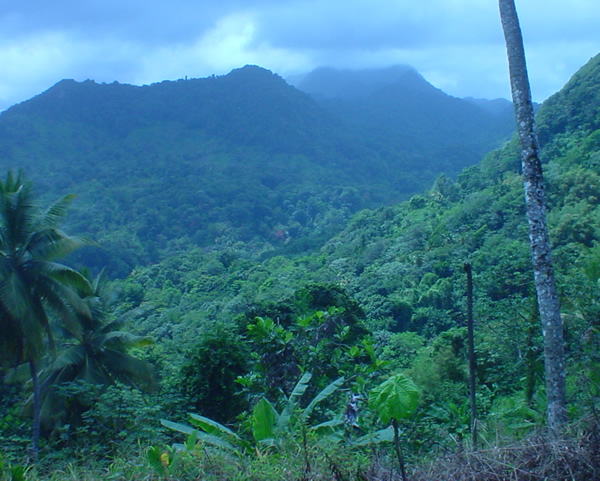 |
| Rain Forest Biomes |
Tropical forests exist in frost-free areas between the Tropic of Cancer and the Tropic of Capricorn. Temperatures range from warm to hot year-round. These forests are found in northern Australia, the East Indies, Southeast Asia, equatorial Africa, and parts of Central America and northern South America.
Rain forests are complicated tropical ecosystems with extremely high levels of biodiversity. Occupying only 6 percent of the earth’s surface, they contain at least 50 percent of the world’s known plant and animal species.
The rain forests are being destroyed at such an unprecedented rate, however, that if the trend continues, no sustainable tropical rain forests will remain by the middle of the twenty-first century.
Rangeland
 |
| Rangeland |
Open land of a wide variety of types, including grasslands, shrublands, marshes, and meadows as well as some desert and alpine land, is known as rangeland.
Rangeland is a valuable and resilient ecosystem resource that supports considerable plant and animal life. Rangeland generally refers to a kind of land rather than a use of that land.
The Society for Range Management defines rangelands as “land on which the native vegetation (climax or natural potential) is predominantly grasses, grass-like plants, forbs, or shrubs.” Rangeland “includes lands revegetated naturally or artificially”as well as “natural grasslands, savannas, shrublands, most deserts, tundra, alpine communities, coastal marshes and wet meadows.”
Red Algae
 |
| Red algae |
Red algae, from the phylum Rhodophyta (from the Greek rhodos, meaning “red”), are named for their reddish color because of their pigment phycoerythrin. Despite their name, not all rhodophytes are red.
Some of them have very little phycoerythrin and appear green or bluish. Most are multicellular and vary greatly in shape; platelike, coral-like, crustlike, leathery, and feather like forms are known.
The bodies of some rhodophytes are relatively complex, characterized by a great deal of branching of their leaf like structures as well as the presence of a holdfast that resembles plant roots.
Reproduction in Plants
 |
| Reproduction in Plants |
Plants have evolved a remarkable number of ways to increase their numbers. These include not only a variety of forms of sexual reproduction, in which two individuals produce specialized cells that fuse to become a new offspring, but also many ways of achieving asexual reproduction, in which a single plant produces offspring.
In unicellular organisms three steps result in cellular reproduction. Among prokaryotic organisms (made of cells that have no nuclei), the single loop of DNA (deoxyribonucleic acid, the molecule that carries genetic information) replicates; then one copy is carried to each daughter cell as the original cell elongates and then “pinches” in two, a process called fission.
In eukaryotic organisms (whose cells have nuclei), the DNA is located within a nucleus in discrete chromosomes that must be precisely divided between the two daughter cells.
Reproductive Isolating Mechanisms
 |
| Reproductive isolating mechanisms |
Reproductive isolating mechanisms are genetically influenced, as opposed to factors such as geographic isolation. These built-in isolating mechanisms prevent interbreeding between species and thereby promote reproductive efficiency.
Reproductive isolating mechanisms prevent interbreeding between species. The term, which was first used by Theodosius Dobzhansky in 1937 in his landmark book Genetics and the Origin of Species, refers to mechanisms that are genetically influenced and built-in.
Geographic isolation can prevent interbreeding among populations, but it is an external factor. The standard model for speciation requires that populations be geographically isolated long enough to diverge genetically.
Resistance to Plant Diseases
 |
| Resistance to plant diseases |
Plants have a number of defense mechanisms by which they can resist biotic or abiotic stresses that might cause their death or inhibit their growth. Such mechanisms are referred to as resistance.
Plants, the primary producers in all food chains, are besieged by a host of biological agents throughout their life cycles. Each species of plant is attacked by at least one hundred different kinds of mycoplasmas, viruses, bacteria, fungi, nematodes, and insects.
In addition, regional weather patterns change, and plants are often faced with unfavorable environmental conditions such as heat, drought, or cold. Plants must contend with the chemicals used by people to deal with unwanted plants. These herbicides are designed to kill the plant or to restrict its growth.
Respiration
All cells must have a source of energy in order to survive. Almost all cells utilize ATP as their energy currency. In other words, ATP is produced and stored up until it is needed to supply energy for metabolic activity.
Respiration is the process by which cells oxidize a fuel, usually the simple sugar glucose, and use the energy released during this oxidation to produce ATP.
The term "metabolism" refers to the sum total of all the chemical activity that occurs within an organism. Metabolism can be further divided into two large categories, anabolism and catabolism.
Respiration is the process by which cells oxidize a fuel, usually the simple sugar glucose, and use the energy released during this oxidation to produce ATP.
The term "metabolism" refers to the sum total of all the chemical activity that occurs within an organism. Metabolism can be further divided into two large categories, anabolism and catabolism.
Rhyniophyta
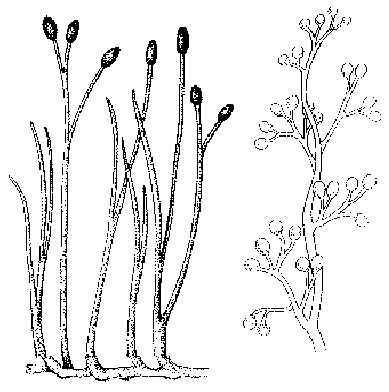 |
| Rhyniophyta |
When first proposed by Harlan Banks in 1968, the Rhyniophyta were the first and oldest vascular land plants. The trimerophytes subsequently evolved from them.
In 1908, Octave Lignier developed a model of what the sporophyte of the earliest vascular land plants might look like. The sporophyte is a diploid (2n) plant that produces spores in a sporangium, while its counterpart, the gametophyte, is a haploid (n) plant that bears the male (antheridia) and female (archegonia) sex organs.
Lignier proposed that the first vascular land plants would consist of a forked, photosynthetic stem lacking both roots and leaves.
Ribosomes
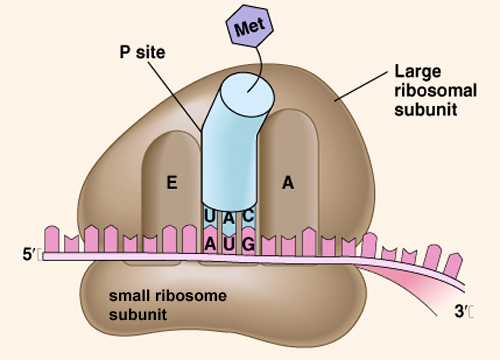 |
| Ribosome |
Ribosomes are complex cellular structures found in all cells and are responsible for making proteins. They are composed of ribosomal RNA (rRNA) and protein and are most abundant in the cytoplasm, although some functional ribosomes can be found in the nuclei of eukaryotic cells. Chloroplasts and mitochondria also have their own ribosomes.
Ribosomes are responsible for synthesizing the proteins in all cells by a process called translation. It is called translation because ribosomes use messenger ribonucleic acids (mRNAs) as their guide and must "translate" the message contained in the nucleotides of mRNAs.
The general structure of ribosomes is the same in all cells, but ribosomes of prokaryotes are smaller than ribosomes in the cytoplasm of eukaryotes. The ribosomes in chloroplasts and mitochondria are more similar to the smaller ribosomes of prokaryotes but are often smaller yet.
Rice
 |
| Rice field |
Rice, the starchy seeds of an annual cereal grass, is the most commonly consumed food grain for a majority of the world’s population.
The rice plant, Oryza sativa, is a member of the grass family, classified into indica and japonica varieties. World production of rice exceeds 500 million tons. Most countries—particularly in Asia—cultivate rice for domestic consumption, so less than 5 percent enters the export market.
The United States generates only about 2 percent of world rice production, but almost half of U.S. production is exported. Rice cultivation almost certainly began in India, where it dates back to about 3000 b.c.e. During medieval times it spread westward to southern Europe.
RNA
 |
| Ribonucleic acid (RNA) |
Ribonucleic acid (RNA), a molecule that plays many roles in the effective usage of genetic information, exists in several forms, each with its own unique function. RNA functions in the process of protein synthesis, during which information from DNA is used to direct the construction of a protein, and possesses enzymatic and regulatory capabilities.
Ribonucleic acid (RNA) is a complex biological molecule that is classified along with deoxyribonucleic acid (DNA) as a nucleic acid. Chemically, RNA is a polymer (long chain) consisting of subunits called ribonucleotides linked together by phosphodiester bonds.
Each ribonucleotide consists of three parts: the sugar ribose (a five-carbon simple sugar), a negatively charged phosphate group, and a nitrogen-containing base. There are four types of ribonucleotides, and the differences between them lie solely in which of four possible bases they contain. The four bases are adenine (A), guanine (G), cytosine (C), and uracil (U).
Root Uptake System
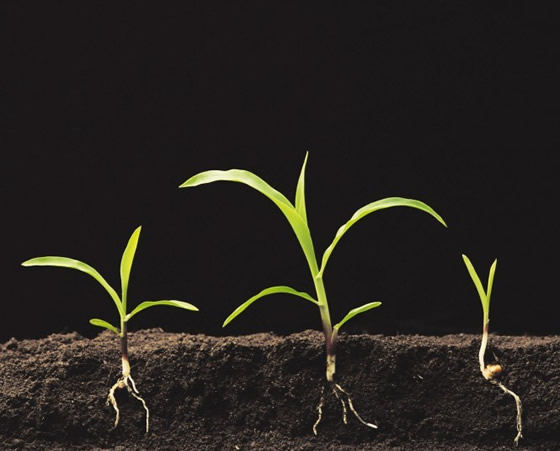 |
| Root Uptake System |
Root uptake systems are processes by which root cells transport water and nutrients from the soil, across the root surface, and to the tissues that will move the water and nutrients throughout the plant.
Fertile soil is a complex mixture of a variety of minerals, many different types of organic matter in different stages of decay, and a host of living microorganisms. This complex medium holds a large quantity of water, which it supplies to plants.
In addition to water, the soil supplies the plants with the thirteen mineral nutrients required for normal growth and development. These nutrients (and the ionic forms taken up by the root) are nitrogen, phosphorus, potassium, sulfur, calcium, magnesium, iron, manganese, boron, chlorine, zinc, copper, and molybdenum.
Roots
Roots are those underground portions of a plant that store food, absorb water and minerals from the soil, and anchor the plant in the earth.
Roots account for more than 80 percent of plants’ biomass in ecosystems such as tundra and short grass prairies. In many plants, roots are longer and spread wider than the shoots. The extensive root systems of plants are effective collectors of water and minerals necessary for the life of the plant.
Root Cap and Quiescent Center
The root’s structure facilitates each of its functions. Tips of roots are covered by a thimble-shaped root cap. At the base of the root cap is a meristem that produces cells that form the cap.
The meristem pushes cells forward into the cap, which protects the tip of the growing root as it forces its way through the soil. As these cells move through the cap, they differentiate into rows of columella cells. Columella cells contain plastids that sediment, in response to gravity, to the lower side of the cell. This sedimentation is how roots perceive gravity.
Roots account for more than 80 percent of plants’ biomass in ecosystems such as tundra and short grass prairies. In many plants, roots are longer and spread wider than the shoots. The extensive root systems of plants are effective collectors of water and minerals necessary for the life of the plant.
Root Cap and Quiescent Center
The root’s structure facilitates each of its functions. Tips of roots are covered by a thimble-shaped root cap. At the base of the root cap is a meristem that produces cells that form the cap.
The meristem pushes cells forward into the cap, which protects the tip of the growing root as it forces its way through the soil. As these cells move through the cap, they differentiate into rows of columella cells. Columella cells contain plastids that sediment, in response to gravity, to the lower side of the cell. This sedimentation is how roots perceive gravity.
Rubber
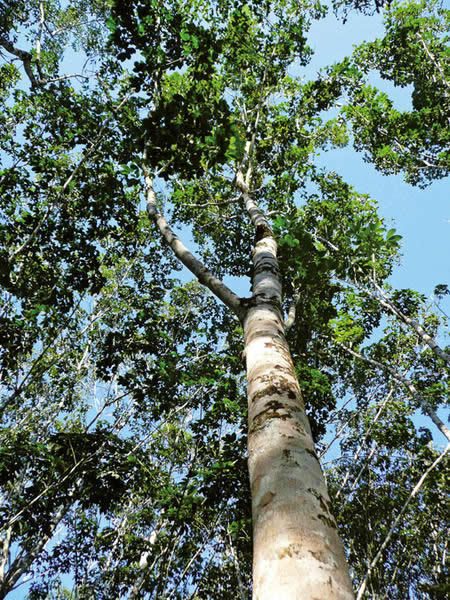 |
| Rubber tree |
The name "rubber" originates from the material’s ability to erase pencil marks; its chemical designation is polyisoprene with several isomers. About 60 to 65 percent of the rubber produced today is synthetic.
When explorer Christopher Columbus arrived in Haiti in 1492 he found Indians playing a game with a ball made from the latex of rubber. American Indians were also known to have used latex for making footwear, bottles, and cloaks. By 1735 latex had been described as caoutchouc by a French geographical expedition in South America.
The role that rubber could play in clothing and footwear attracted the attention of chemists and inventors throughout the world in the late eighteenth and mid-nineteenth centuries. Charles Macintosh and Thomas Hancock, working as colleagues, discovered two separate means of using rubber in fabrics and footwear.
Rusts
 |
| Rust fungi |
Rust fungi belong to the taxonomic class Teliomycetes within the basidiosporic phylum and include some seven thousand known species, all plant parasites, with many being extremely important plant pathogens.
Rust diseases have caused serious problems for centuries and continue to cost billions of dollars annually worldwide.
Important examples include: leaf, stem, and crown rusts of wheat, barley, and oats; the blister, fusiform, and gall rusts of pines; coffee rust; many field crop rusts, such as soybean, peanut, sunflower, and flax rusts; and rusts of many horticultural crops and ornamental plants, such as cedar-apple rust, bean rust, and rose rust.
Savannas and Deciduous Tropical Forests
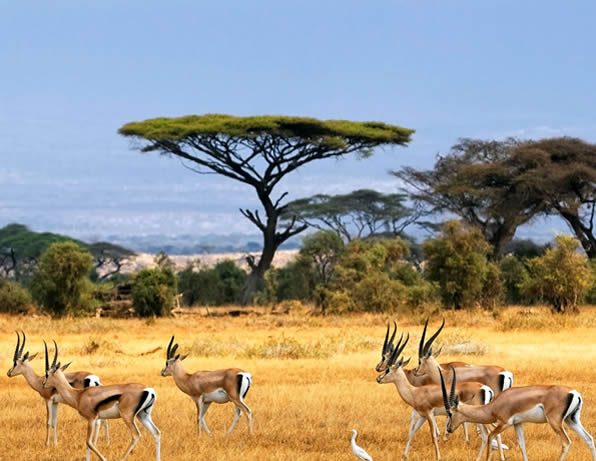 |
| Savanna grassland |
Savannas are areas of continuous grass or sedge cover beneath trees that range from scattered, twisted, and gnarled individuals to open wood lands. Deciduous tropical forests have continuous to open forest cover and undergo a leafless period during a seasonally lengthy dry season.
Where the annual rainfall in tropical regions is less than 2,000 millimeters and three to six months out of the year are dry, savannas and deciduous forests are common. Both savannas and deciduous tropic forests often occur where the annual rainfall is less than that of savannas. Together, the two biomes are referred to here as the dry tropical biome.
A pronounced pattern of seasonally wet and dry periods is the most important factor affecting the distribution of these types of plant cover. Higher soil fertility favors forest over grasses and savanna such as in the cerrado of Brazil, which occurs only on certain geological formations and low-nutrient soils.
Seedless Vascular Plants
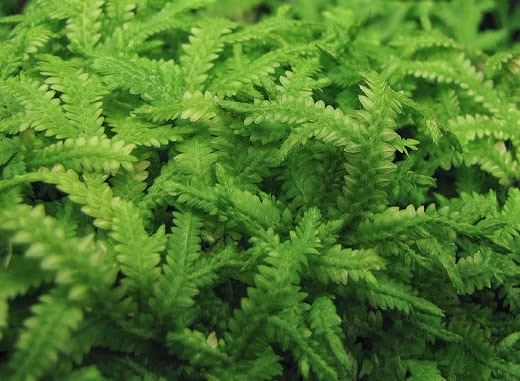 |
| Seedless Vascular Plants |
Seedless vascular plants possess vascular tissues (xylem and phloem) for transport of materials through the body but do not produce seeds bearing dormant embryos as part of the reproductive process. They are among the oldest of land plants.
Modern seedless vascular plants include species from several different phyla, including the club mosses, spike mosses, and quill worts of the phylum Lycophyta, the horsetails of the phylum Sphenophyta, the whisk ferns of the phylum Psilotophyta, and the great diversity of ferns in the phylum Pterophyta. Lycophytes, sphenophytes, and psilotophytes are generally referred to as fern allies.
Carolus Linnaeus used theword Cryptogamia (from the Greek kryptos, meaning “hidden,” and gamos, meaning “marriage,” or reproduction) as an inclusive taxonomic category for a wide range of organisms such as bryophytes, ferns, fern allies, algae, and fungi whose sexual reproductive parts were concealed from observation. The term cryptogam in modern usage refers to plants that do not produce seeds.
Seeds
 |
| Seeds |
A seed is a mature, fertilized plant ovum containing an embryo, a food supply, and a protective covering called the testa, or seed coat.
A mature seed typically consists of a mature plant ovum containing a minute, partially developed young plant, the embryo, surrounded by an abundant supply of food and enclosed by a protective seed coat.
Seed plants are divided into two main groups: the gymnosperms, primarily cone-bearing plants such as pine, spruce, and fir trees, and the angiosperms, the flowering plants.
Selection
 |
| Selection |
Selection refers to any process by which some individuals are allowed to reproduce at the expense of others, leading to a shift in the composition of a population over generational time.
In the context of animal and plant breeding by humans, the process of selection is referred to as artificial selection. In the wild, it is referred to as natural selection and is viewed by scientists as the principal means by which adaptations (traits that promote the survival and reproduction of organisms) arise and new species evolve over geological time frames.
Natural Selection
In On the Origin of Species by Means of Natural Selection, published in 1859, Charles Darwin presented arguments for two related theories. The first argument documents evidence for evolution on the basis of an extensive study of biogeographical, embryological, and fossil data.
Serpentine Endemism
 |
| Shasta Fern on Serpentine Soil |
Serpentine endemics are plants that grow only in serpentine soils. These uncommon soils present serious challenges to plants and are often sparsely covered with dwarfed vegetation.
Serpentine rock is one form of ultramafic rock, an uncommon rock found in mountain-building zones. Soils derived from ultramafic rock are called serpentine soils.
The most important chemical characteristics of ultramafic rock and of the serpentine soils formed from it are high magnesium concentrations; low calcium concentrations; low calcium/magnesium ratios; low concentrations of other macro nutrients (such as nitrogen, phosphorus and potassium); high concentrations of toxic heavy metals (such as nickel, chromium, and cobalt); and low micro nutrient (molybdenum, boron) concentrations. All these factors are detrimental to plant growth.
Shoots
 |
| Shoots |
“Shoot” is a term used to refer collectively to the stem and associated leaves of a vascular plant.
The stem of a vascular plant is typically a cylindrical, above ground axis that grows upright, away from the pull of gravity. Young stems are green and photosynthetic, and in some plants, such as horse tails and most cacti, the stems are the primary site of photosynthesis.
In most plants, however, the primary function of the stem is to support leaves in a position where they are well exposed to light. The part of the stem where a leaf attaches is a node. The section of stem between nodes is an internode. Internode elongation spaces the leaves and is responsible for most of the increase in length of the stem every growing season.
Soil
Soil is a product of the physical and chemical breakdown of the earth’s surface into small fragments, including sand, silt, and clay. Soil contains the products of organic matter decomposition—the composting of dead plant and animal debris.
Soils are classified on the basis of soil profile and soil formation. They can be grouped according to a number of characteristics, including agronomic use, color, organic matter content, texture, and moisture condition.
Typical soil is about 45 percent minerals and about 5 percent organic matter. The other 50 percent of soil consists of pores that hold either water or air. The liquid portion of soil contains dissolved minerals and organic compounds, produced by plants and microorganisms.
Soils are classified on the basis of soil profile and soil formation. They can be grouped according to a number of characteristics, including agronomic use, color, organic matter content, texture, and moisture condition.
Typical soil is about 45 percent minerals and about 5 percent organic matter. The other 50 percent of soil consists of pores that hold either water or air. The liquid portion of soil contains dissolved minerals and organic compounds, produced by plants and microorganisms.
Soil Degradation
 |
| Soil Degradation |
A decline in soil quality, productivity, and usefulness due to natural causes, human activities, or both, is known as soil degradation. It is often caused by unfavorable alterations in one or all of a soil’s physical, chemical, and biological attributes.
In 1992, for the first global study of soil degradation, the World Resources Institute in Washington, D.C., reported that 3 billion acres of land worldwide had been seriously degraded since World War II. They also stated that 22 million acres of once usable land could no longer support crops.
Natural Processes and Human Activities
Of the total acreage lost to soil degradation, almost two-thirds is in Asia and Africa; most of the loss is attributable to water and wind erosion resulting from agricultural activities, overgrazing, deforestation, and firewood collection.
Soil Management
 |
| Soil Management |
Tillage, conservation, and cropping practices are soil management techniques that are used to preserve soil resources while optimizing soil use.
Soils are managed differently depending on their intended use. Soil management groups are soil types with similar adaptations or management requirements for specific purposes, such as use with crops or cropping rotations, drainage, fertilization, forestry, highway engineering, and construction.
In managing soil for agriculture, soil management includes all tillage and planting operations, cropping practices, fertilization, liming, irrigation, herbicide and insecticide application, and other treatments conducted on or applied to the soil surface for the production of plants.
Soil Salinization
 |
| Soil salinization |
Soil salinization is a process in which water-soluble salts build up in the root zones of plants, blocking the movement of water and nutrients into plant tissues.
Soil salinization rarely occurs naturally. It becomes an environmental problem when it occurs as a result of human activity, denuding once vegetated areas of all plant life.
Rainwater is virtually free of dissolved solids, but surface waters and underground waters (groundwater) contain significant quantities of dissolved solids, ultimately produced by the weathering of rocks.
South American Agriculture
 |
| South American Agriculture |
Increasing urbanization in South America raises questions regarding use of both land that is farmed and land that is abandoned.
In South America as elsewhere, land forms, soil, water, climate, and culture interact to produce an arrangement of agricultural production specific to the region.
South America can be divided into six general land form regions: the Andes Mountains, the plateaus of the interior of the continent, the river lowlands, the coastal lowlands, the tierra templada, and the tierra fria.
South American Flora
 |
| Amazon rainforest |
South America is the most diverse continent in terms of flora, primarily because of its location and geography.
South America’s floristic diversity is increased by its high mountains, especially the Andes Mountains, which extend from north to south along the western part of the continent for much of its length.
South America has such diverse biomes as tropical rain forests, tropical savannas, extremely dry deserts, temperate forests, and alpine tundra.
Spermatophyta
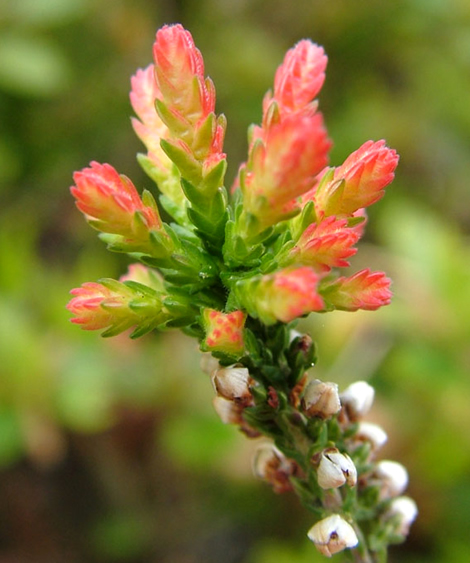 |
| Spermatophyta |
The Spermatophyta are those members of the Tracheobionta that produce seeds. At one time this category was considered to be natural, composed only of closely related groups with homologous seeds.
It is now known that seeds evolved many different times during evolutionary history and that different groups of extant seed plants may or may not be closely related to other groups of extinct or extant spermatophytes.
Scientists once thought that the seed plants were monophyletic, derived from a single common ancestor. It is now known they are polyphyletic, derived from more than one ancestral group. The distinctions can be seen in the variations among seed structures and functions.
Species and Speciation
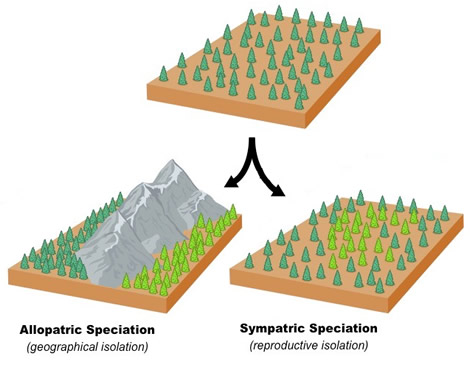 |
| Species and Speciation |
A species is any group of organisms recognized as distinct, with members able to interbreed with one another and produce fertile offspring. Speciation is the evolutionary process whereby a species comes into existence.
Species are distinct kinds of organisms, in that the organism can be recognized as different from other kinds of similar organisms by a combination of characteristic shapes, sizes, behaviors, physiology, or other attributes.
For instance, white oaks can be recognized as different from other oak species by growth form and habitat, along with a combination of leaf, fruit, and bark characteristics.
Spices
 |
| Spice market in Cairo, Egypt |
Spices are a group of plant products used to impart flavor to foods. Unlike herbs, spices are generally derived not from the leafy and other green portions of the plant, but rather from the seeds, fruits, flower parts, bark, or rhizomes.
Spices are also generally distinguished from herbs by the greater strength, intensity, or pungency of their flavors.
For thousands of years, humans have added spices and herbs to their foods in order to improve taste. Before modern refrigeration and canning, the first signs of spoiling could be masked by adding parts of aromatic plants—spices and herbs. In modern times, spices and herbs are added only to enhance the flavor of foods.
Stems
 |
| Stem |
The stem is the part of a vascular plant that supports the leaves and reproductive structures, often at some distance above the ground.
Stems have two chief functions: to support various plant structures and to transport water and nutrients. Most stems support the leaves and reproductive organs at some distance above the ground.
Such elevation is important to both leaves, whose function is to trap light energy for photosynthesis, and flowers, because being positioned above the ground helps attract pollinators. Fruits also benefit from being held aloft because height improves the chances of long-distance seed dispersal.
Strip Farming
 |
| Strip Farming |
Strip farming is the growing of crops in narrow, systematic strips or bands to reduce soil erosion from wind and water and otherwise improve agricultural production.
The origins of strip farming can be traced to the enclosure movement of post medieval Great Britain. Landlords consolidated the small, fragmented strips of land farmed by tenant peasants into large block fields in an effort to increase agricultural production.
Peasant plots were typically 1 acre in size: 220 yards, or one furlong in length (the distance a team of oxen can plow before resting) and 22 yards in width (the amount one team of oxen can plow in one day).
Stromatolites
 |
| Stromatolites |
Stromatolites are laminated, sedimentary fossils formed from layers of blue-green algae (also known as blue-green bacteria or cyanobacteria). Located throughout the world, these ancient remnants of early life have revealed much about the “age of algae.”
Stromatolites are the most common megascopic fossils, contained within ancient rocks dating to 3.5 billion years in age.
In both the living and fossil form, they are created by the trapping and binding of sediment particles and the precipitation of calcium carbonate to the sticky surface of mat like filaments grown on a daily cycle by blue-green algae (also known as cyanobacteria).
Succession
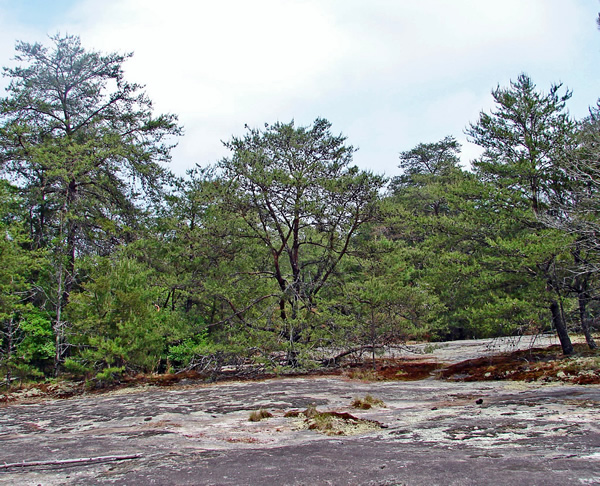 |
| Succession |
Succession is the progressive and orderly replacement of one biological community by another until a relatively stable, self-maintaining community is achieved.
Succession is an important ecological phenomenon because it allows the maximum variety and number of species to occupy a given area through time and leads to the establishment of an ecologically stable climax community that represents the most complex and diverse biological system possible, given existing environmental conditions and available energy input.
As succession proceeds, significant changes occur in species composition, nutrient cycling, energy flow, productivity, and stratification. Changes also occur within the climax community; however, these changes act to maintain the climax, not alter it.
Sugars
 |
| Sugar |
Refined from sugarcane, sugar beets, and corn, sugars are a major and vital part of nutrition and provide the basic molecular structure for most living matter.
Sugars, through the process called cellular respiration, are the primary power sources used to produce adenosine triphosphate (ATP), the energy exchange molecule that sustains all life.
Energy is stored in organisms as starch or fat but is burned as sugar. Sugars include some of the simplest carbohydrates, and they are building blocks of more complicated molecules. Common sugars include glucose, fructose, sucrose, maltose, and lactose.
Sustainable Agriculture
 |
| Sustainable Agriculture |
Sustainable agriculture is the practice of growing and harvesting crops in a manner that will allow the land to return to its pre cultivation state. It seeks to maintain the quality of air, soil, and water resources for future human use and for wildlife.
Most twentieth century agricultural practices were based upon continued economic growth. This practice demonstrated dramatic increases in production but had negative impacts on the environment through the losses of plant and animal habitats, depletion of soil nutrients, and increases in pollution of water supplies. The concept of sustainable development is based on using renewable resources and working in harmony with ecosystems.
The World Commission on Environment and Development described the concept of sustainable development as being able “to meet the needs of the present without compromising the ability of future generations to meet their own needs.”
Systematics and Taxonomy
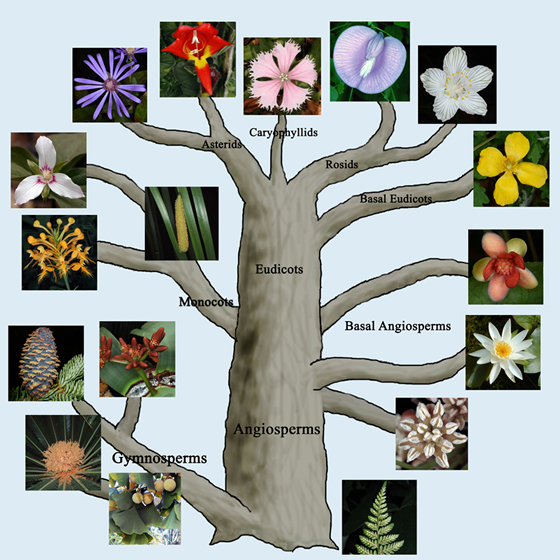 |
| Systematics and Taxonomy |
Systematics deals with evolutionary, or phylogenetic, relationships among organisms, whereas taxonomy is more involved with the classification, naming, and description of organisms.
In practice, the two terms are often used interchangeably to refer to the study of relationships among organisms,which in turn often derives from their description and drives their naming.
The history of the disciplines of systematics and taxonomy has shifted with the evolution over the years of the state of knowledge about living organisms, their origins, and their relationships. There has been a historical shift from an emphasis on classification (simply naming and identifying organisms) to the study of phylogenetic (evolutionary) relationships.
Taiga
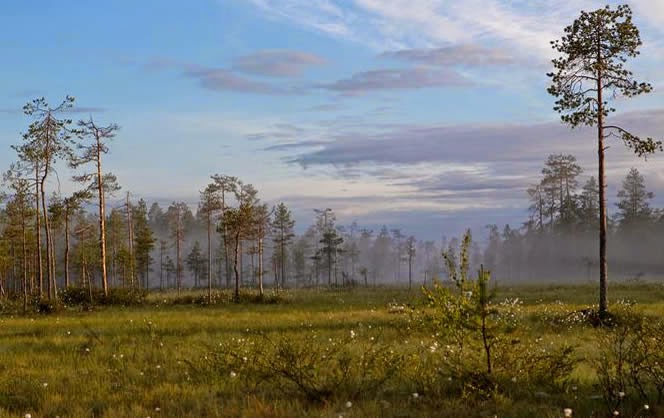 |
| Taiga in Findland |
“Taiga” derives from a Russian word for the forests of cone-bearing, needle-leaved, generally evergreen trees of northern Eurasia and North America. “Coniferous forest” and “boreal forest” are other names given to this biome.
Some botanists include the temperate rain forests along the Pacific Coast of North America and the coniferous forests in the western mountains in the taiga.
While the term “coniferous forest” can be applied to temperate rain forest and coniferous forest biomes in the western mountains, the terms “taiga” and “boreal forest” should be restricted to the northern forests. “Taiga” is also sometimes used in a more restricted way, to mean a subdivision of the boreal forest.
Textiles and Fabrics
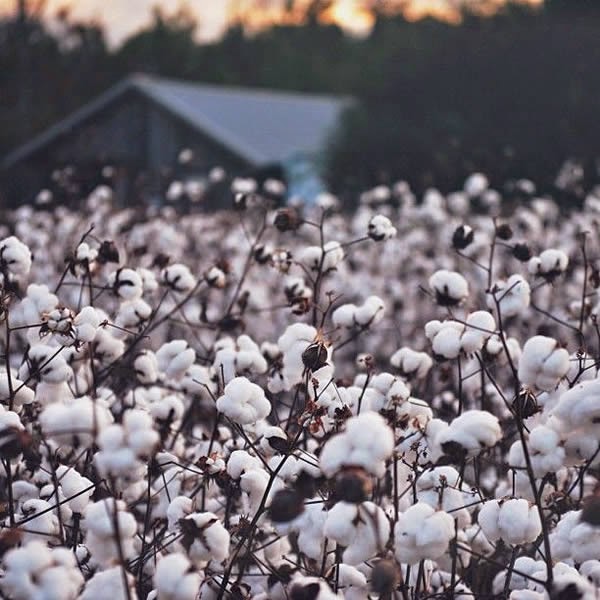 |
| Cotton plants |
Cotton, flax, ramie, hemp, jute, and other cellulosic fiber plants are all sources capable of producing textiles and fabrics that can be used to create knitted,woven, or nonwoven cloth material or fiber and yarn intended for fabric production.
All textiles are made through the use of fibers, thin strands of natural or artificial material. A fiber is a threadlike strand, usually flexible and capable of being spun into yarn.
About forty different fibers are of commercial importance. While textiles are primarily made from yarn, they are also made by felting,which is the process of pressing steamed fibers together to make cloth.
Thigmomorphogenesis
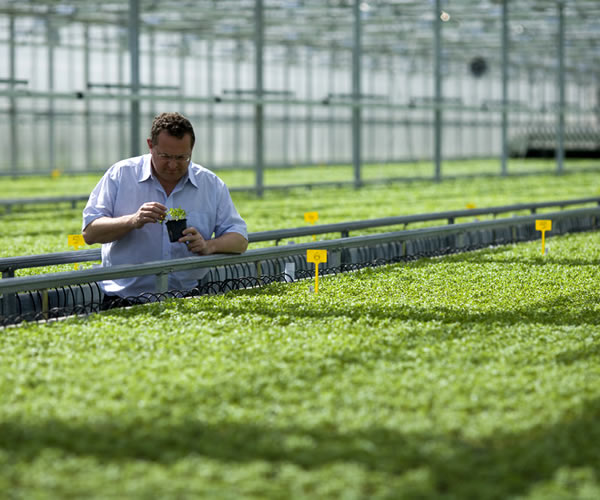 |
| Checking thigmomorphogenesis efect on crops |
Thigmomorphogenesis refers to the influence of mechanical stimuli on plant growth and development. Many plants respond to stimuli such as wind or touch, intentionally by human beings or unintentionally by farm machineries and animals.
Plants subjected to thigmomorphogenesis, or physical disturbances such as wind and touch, generally respond through reduction in the rate of stem elongation and shoot height, and they increase in stem diameter. All of these features result in the formation of short, stocky plants.
This response is purely adaptive and allows individual plants to compensate for the different levels of stress that occur in their natural environment. The advantage of this is that shorter and stronger plants are less easily damaged by natural mechanical stresses (especially wind) than their taller, more slender counterparts.
Timber Industry
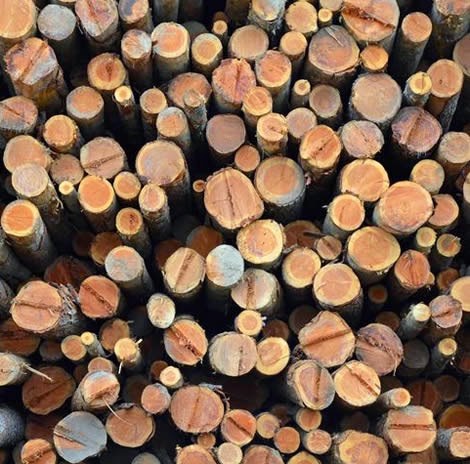 |
| Timber Industry - Pile of freshly cut logs |
The timber industry comprises a diverse group of companies and organizations using wood and fiber harvested from forests in the production of solid wood products (such as furniture and lumber), reconstituted wood products (such as particle board), pulp and paper, and chemicals.
Globally, about 3.8 billion cubic meters of wood were used for human consumption in 1995. The rate was increasing by 2.3 percent per year, faster than the rate of population growth.
More than fifty thousand establishments in the United States are involved in the manufacture of forest products, and this industry contributed approximately 8 percent of the United States’ gross national product in 1980. In addition, many other commercial products are derived from forest resources, including types of fuel, medicine, and food, and specialty items such as Christmas trees.
Tracheobionta
Tracheobionta is the subkingdom of plants that contain vascular tissues, xylem and phloem. They are commonly known as the vascular plants.
Vascular plants are plants that have tissues called xylem and phloem as conducting tissues. Xylem is tissue composed of vessels, fibers, and tracheids responsible for upward conduction of water and dissolved minerals; it also functions as the supporting tissue of stems.
Phloem is conducting tissue that is responsible for moving food manufactured in the leaves to other parts of the plant, including the roots. The botanical name for the vascular plants is Tracheobionta. This group of plants includes both seedless and seed plants, including the flowering plants (angiosperms).
Vascular plants are plants that have tissues called xylem and phloem as conducting tissues. Xylem is tissue composed of vessels, fibers, and tracheids responsible for upward conduction of water and dissolved minerals; it also functions as the supporting tissue of stems.
Phloem is conducting tissue that is responsible for moving food manufactured in the leaves to other parts of the plant, including the roots. The botanical name for the vascular plants is Tracheobionta. This group of plants includes both seedless and seed plants, including the flowering plants (angiosperms).
Trimerophytophyta
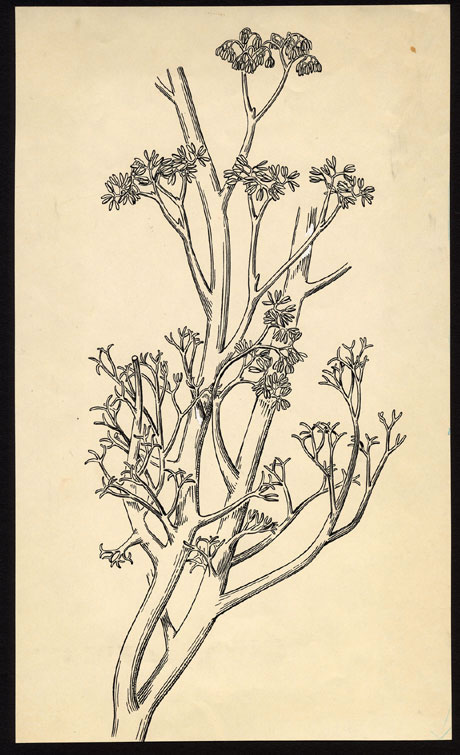 |
| Trimerophytophyta |
As first proposed by Harlan Banks in 1968, the trimerophytes evolved from the rhyniophytes and then gave rise, either directly or indirectly, to all other groups of vascular land plants except the zosterophyllophytes and lycopods.
The trimerophytes appeared and diversified between 406 million and 401 million years ago, during the Devonian period. They evolved from the rhyniophytes (Rhyniophyta), and they share a number of characteristics with that group.
Both groups branched by having an axis fork into two branches of equal size. Viewed from the side, the point of branching would appear like a capital Y. Both groups also bore elongate sporangia at the ends of some of these branches.
The chief feature that distinguished the two groups was size. The rhyniophytes were small plants, approximately 25 centimeters (10 inches) or less in height.
Trophic Levels and Ecological Niches
 |
| Trophic Levels and Ecological Niches |
To be meaningful, classification of organisms based on divisions within the food pyramid, called trophic levels, often must be considered alongside the particular space, or place niche, occupied by an organism and its functional role in the community, the totality of the organism’s interactions and relationships with other organisms and the environment, or ecological niche.
For many years, ecologists referred to niche in terms of an organism’s place in the food pyramid. The food pyramid is a simplified scheme showing organisms’ interactions with one another while obtaining nourishment.
The food pyramid is represented visually as a triangle, often with four horizontal divisions, each division being a different trophic level.
Tropisms
 |
| Tropisms |
Tropisms are the means by which plants grow toward or away from environmental stimuli such as light, gravity, objects to climb, moisture in soil, or the position of the sun.
Although plants appear not to move, they have evolved adaptations to allow movement in response to various environmental stimuli; such mechanisms are called tropisms.
There are several kinds of tropism, each of which is named for the stimulus that causes the response. For example, gravitropism is a growth response to gravity, and phototropism is a growth response to unidirectional light.
Tundra and High-Altitude Biomes
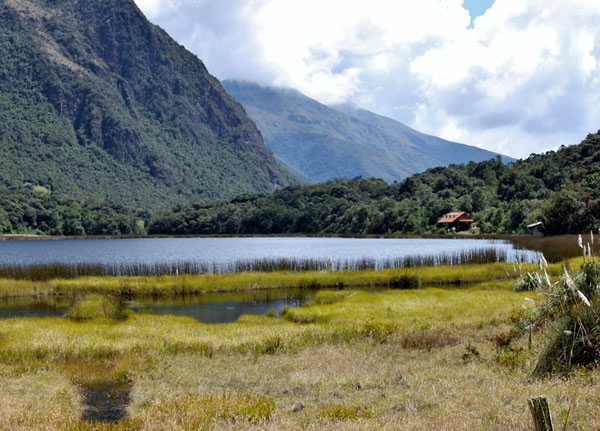 |
| Tundra and High-Altitude Biomes |
Regions where no trees grow because of frozen soil or extreme water runoff due to steep grades (at high altitudes) are known as tundra. High altitude biomes have similar limitations on the growth of plant life.
Tundra landscapes appear where long, cold winters, a permanently frozen subsoil, and strong winds combine to prevent the development of trees. The resulting landscapes tend to be vast plains with low-growing forbs and stunted shrubs.
Vast areas of this biome encircle the northernmost portions of North America and Eurasia, constituting the Arctic tundra. Climatic conditions atop high mountains at all latitudes are similar; these small, isolated areas are called the alpine tundra.
Ustomycetes
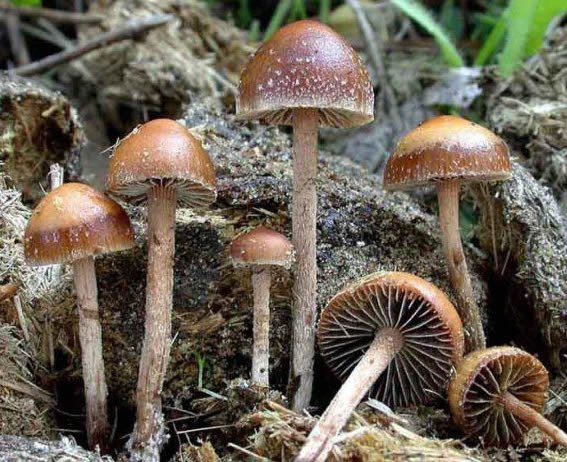 |
| Ustomycetes |
The Ustomycetes are a group of the basidiosporic fungi that includes about a thousand species. These fungi all produce spores in a sorus, amass of spores that is produced on the surface of a plant host.
Ustomycetes are all parasites of plants, and some are serious pathogens. Most produce hypertrophy (excessive cell growth) in plant tissues.
One of three main classes of Basidiomycota, the ustomycetes include several different orders. Cryptobasidiales is a small order of fungi found in tropical areas of South America and Africa.
Subscribe to:
Comments (Atom)

